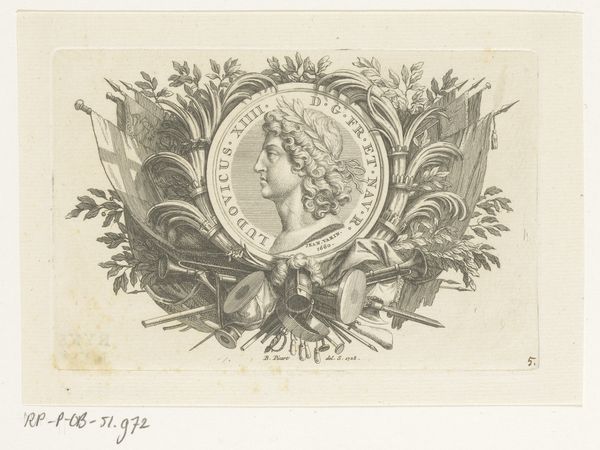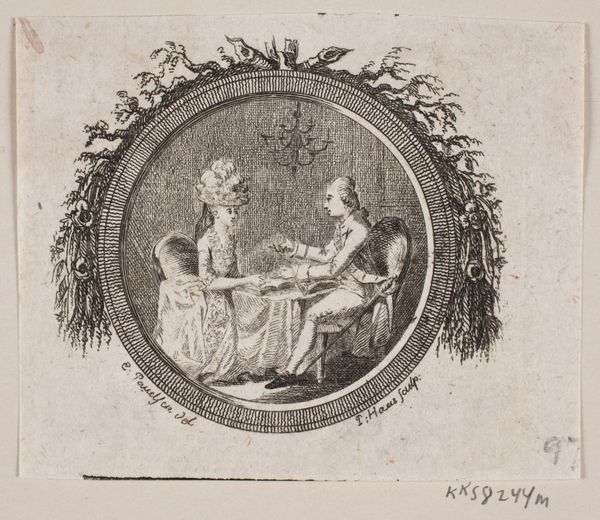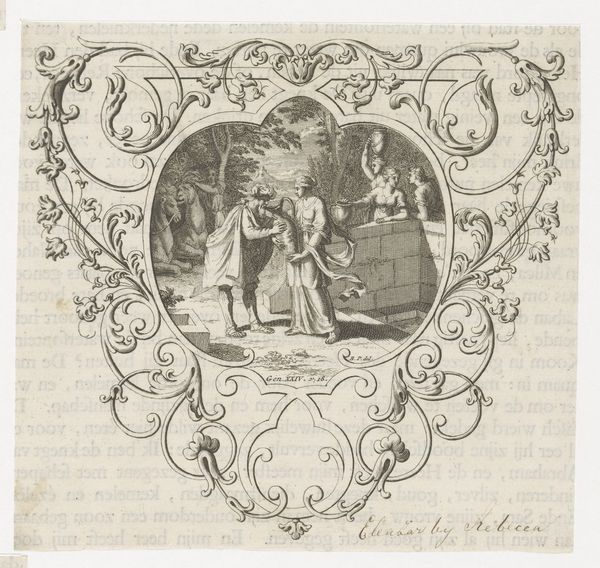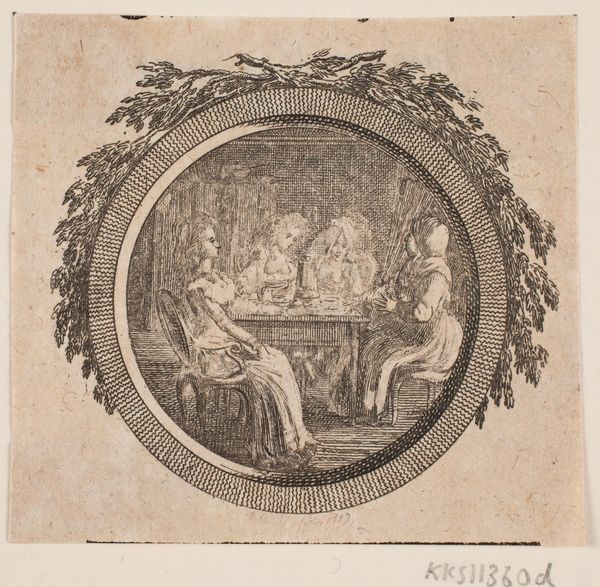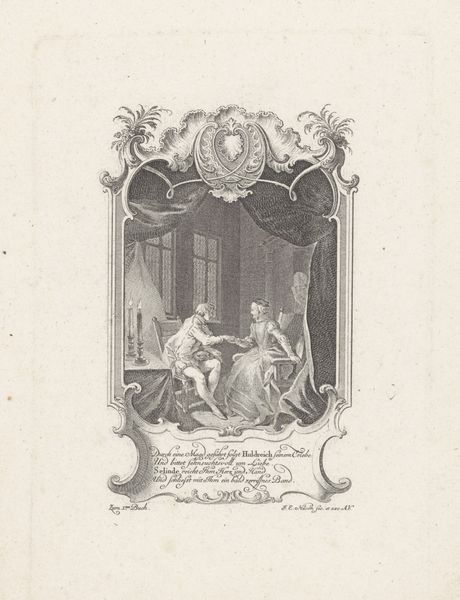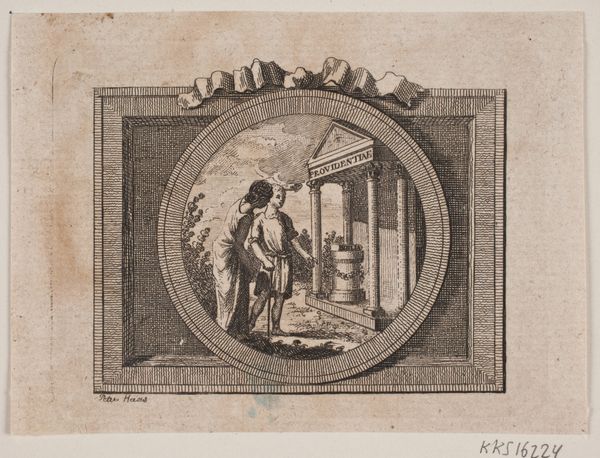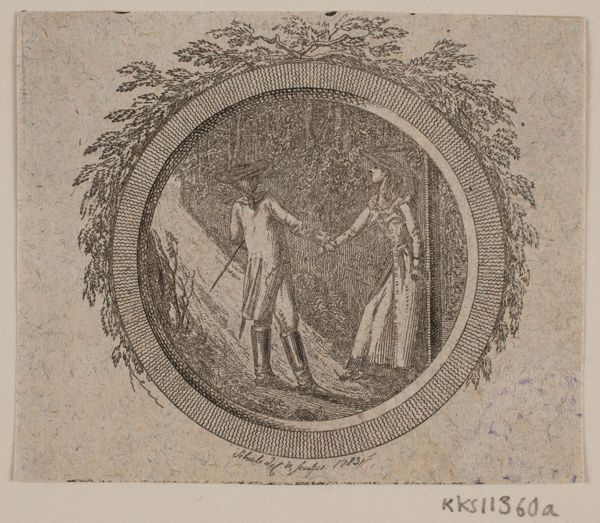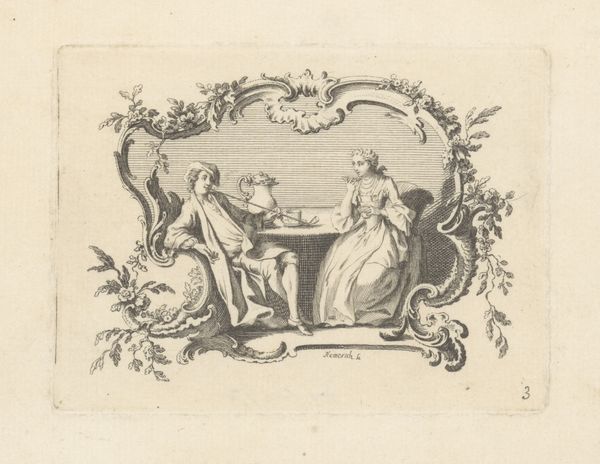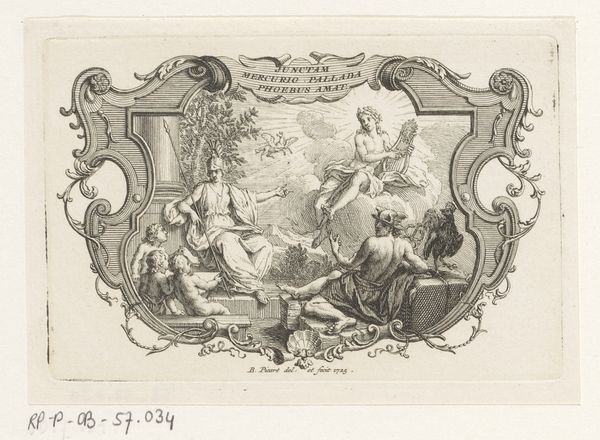
Titelvignet til S. Richardson: "Miss Clarissa Harlowes Historie", femte del 1783
0:00
0:00
print, engraving
#
narrative-art
# print
#
figuration
#
history-painting
#
engraving
Dimensions: 60 mm (height) x 73 mm (width) (bladmaal)
Editor: This engraving from 1783 by Georg Christian Schule is called "Titelvignet til S. Richardson: Miss Clarissa Harlowes Historie, femte del." It seems to depict a rather dramatic scene – a woman bound at the wrists, with another woman comforting her, and a man gesturing towards them. It looks so emotionally charged, but what do you see in this piece? Curator: What immediately strikes me is the narrative being presented. Consider Samuel Richardson’s "Clarissa," a landmark epistolary novel that deeply engaged with the social constraints and vulnerabilities faced by women. Here, the vignette distills that intensity into a single, loaded image. How might we interpret this scene as a commentary on female agency, or perhaps the lack thereof, within a patriarchal society? Editor: I guess the binding signifies her lack of agency, right? And the man seems to be at the origin of it. It seems odd to frame something so serious with a decorative vignette... Curator: Exactly! The vignette, seemingly decorative, acts as a powerful frame highlighting Clarissa's predicament, underscoring how women’s experiences are often contained and mediated by social and aesthetic structures. Schule invites us to critically examine these power dynamics and consider how women’s stories are told, and, more importantly, whose perspectives are privileged. Look at how the scene seems almost staged. What does this suggest to you about 18th-century performance and its correlation to daily life? Editor: The "staging" of daily life is interesting. Perhaps these roles become something we play. The performance of being a "woman", the performance of "honor." So, the frame, along with the composition of the engraving, shows us a highly staged interpretation of a complex narrative, laden with social and gender expectations. Curator: Precisely! Understanding this work through the lens of social performance opens it to new avenues of interpretation and invites contemplation about individual identity and prescribed roles. Editor: I hadn't considered it in this context. Thanks to your interpretation, the work now has a greater meaning for me. Curator: And for me as well; these works constantly teach me new things about their historical context!
Comments
No comments
Be the first to comment and join the conversation on the ultimate creative platform.


